72: The Ace of Spades
In standard English packs the Ace of Spades is associated with decorative designs. This is a historical survey of why this should be.
The Ace of Spades in most English, American and standard English packs made in other countries is usually highly decorative, in contrast to, for example, the same card in standard Paris pattern packs. The reason for this is assumed to be that in the 18th and 19th centuries the Government of the day collected tax revenues on playing cards by making the card-makers buy their aces from the Stamp Office, which were printed by the Government. To reflect their official status, and to avoid forgery (though this was less successful in the early days), the ace was decorative. The tax was introduced in 1711, but at that time cards were merely stamped on a particular card, not necessarily the AS. In 1765 the system of buying the AS from the Stamp Office was introduced. For a detailed account of the different forms of the ace and taxes, see John Berry's Taxation on playing-cards in England from 1711 to 1960, IPCS Papers 3, 2001. Here I'll give an example of each type with the dates they were used and follow Berry's numbering system. There were also special aces for exported cards, as these were exempt from tax in this country.
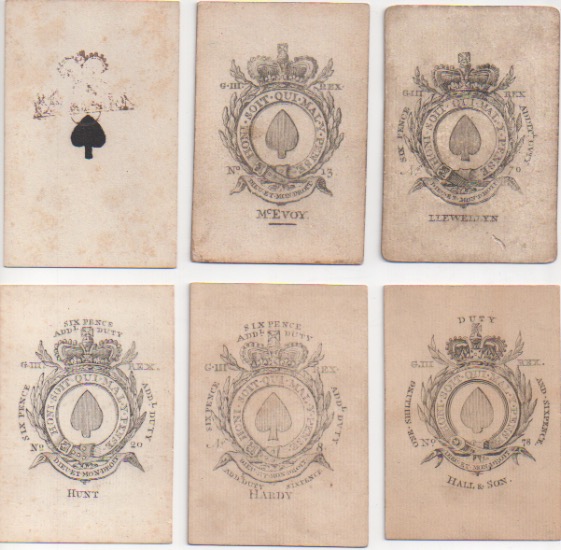
Above: From top left to bottom right: 1: an export stamp on a Blanchard pack, c.1760; 2: A1, 1765-76; 3: A2, 1776-89; 4: A3, 1789-1801; 5: A4, 1801-28; 6: A5, 1804-28
Each new ace represents an increase up until the tax was at 2/6d per pack at the height of the Napoleonic wars (for details, see Berry's section 1, page 3). Ace A6 (1820-28) was the same as A5 except that George IV replaces George III, though both types continued to be used during this period. The tax was reduced to 1/- (one shilling) in 1828 and a new, more elaborate ace was produced, sometimes unappropriated to any particular maker and often rather lightly printed.
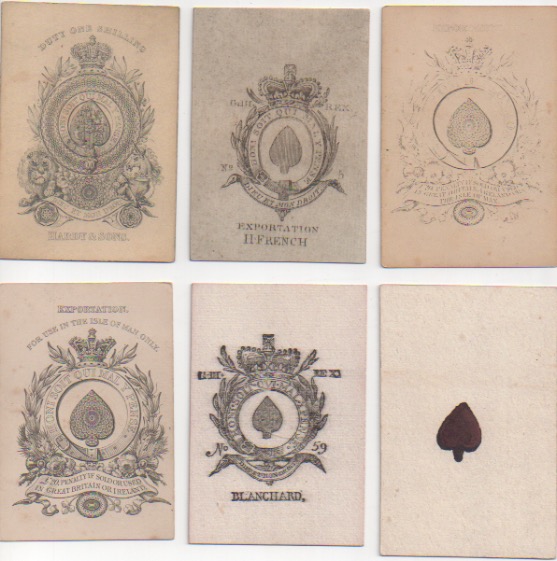
7: A7, Old Frizzle. 1828-62; 8: A8, Export, 1765-1828; 9: A10, Export, 1828-62, here unappropriated from a Whitaker pack; 10: Export to the Isle of Man only, 1828-62, always unappropriated, again from a Whitaker pack; 11: a fake Blanchard A1 AS, probably as late as 1820; 12: another tax-avoidance trick, using another ace and converting it, here an AH, though I also have examples of ACs. A9 is the George IV version of A8 (1820-28).
There were also small-size aces for the so-called piquet packs, though only one Old Frizzle of this size is known, made for Hunt & Sons (for details, see John Berry's book).
The AS is also known as the Death Card. The usual explanation is that if you were caught forging the AS, or even owning aces not assigned to you, you were taken to court by HM Government. If you were found guilty, you would be sentenced to death by hanging. This happened to Richard Harding in 1805, and again in 1836, when Henry Wheeler was found guilty, although in this case it is suggested that the sentence was commuted to transportation.
After 1862, when the tax was reduced to three pence per pack, there was no longer any requirement to indicate this or to have a fancy AS. However, it would appear that the tradition was so important to the card industry, and maybe even card-players, that ornamental aces of spades continued to be made, in many cases being registered as trademarks. This tradition was copied by American and other foreign card-makers right up to the present day. I have illustrated various ASs on the pages of this blog, but I'll present a selection of the more interesting ones here.
English
The following are from different makers of the post-Frizzle period, as indicated. In this square-cornered format they cover the period from 1862-90. The De La Rue ace, designed by Owen Jones, lasted a lot longer in slightly different versions, right up until 1957, when the silhouette AS was introduced.
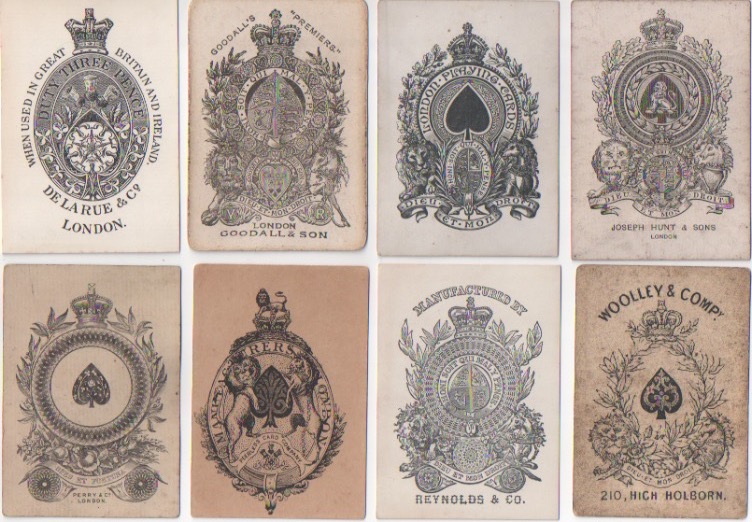
1: De La Rue; 2: Goodall, used in Chancellors and Premiers; 3: Goodall for London PCCo., from 1880; 4: Hunt, later firm.
5: Perry & Co., stationers, 1865-69; 6: James English, Peerless; 7: Reynolds & Co., after take-over by Goodall; 8: early Woolley.
American
The duty on American cards was collected via a paper stamp (for details, see Dawson & Dawson, The Hochman Encyclopedia of American Playing Cards, 2000). There was no requirement for a decorative AS. Here are a few examples from the 19th century.
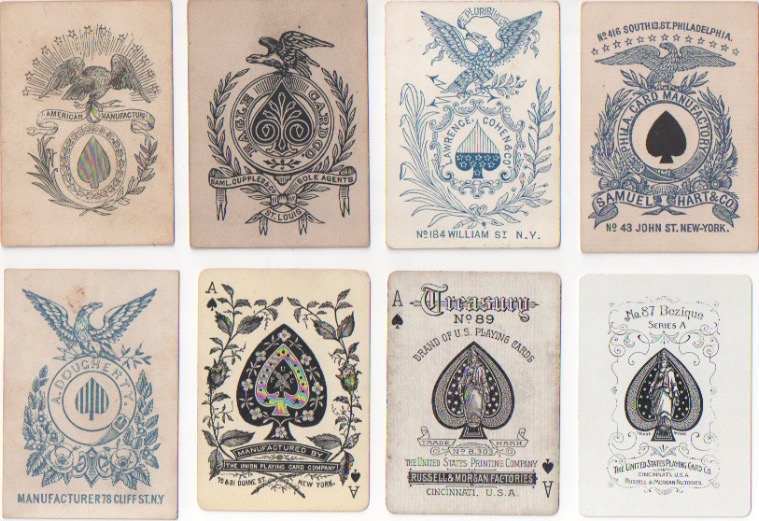
1: Anonymous, probably Crehore, c.1845; 2: Eagle Card Co., c.1867; 3: Lawrence & Cohen, c.1870; 4: Hart, c.1870: both 3 & 4 are from a Samuel Hart bazique set.
5: Dougherty, c.1848; 6: Union PCCo., c.1880; 7: United States Printing Co., c.1894; 8: USPCC, c.1899.
From other countries
The rest of the world copied the tradition, even though they had different ways of collecting the tax. Here are a few examples from the 20th century. Even today, cheap Chinese cards have decorative ASs.
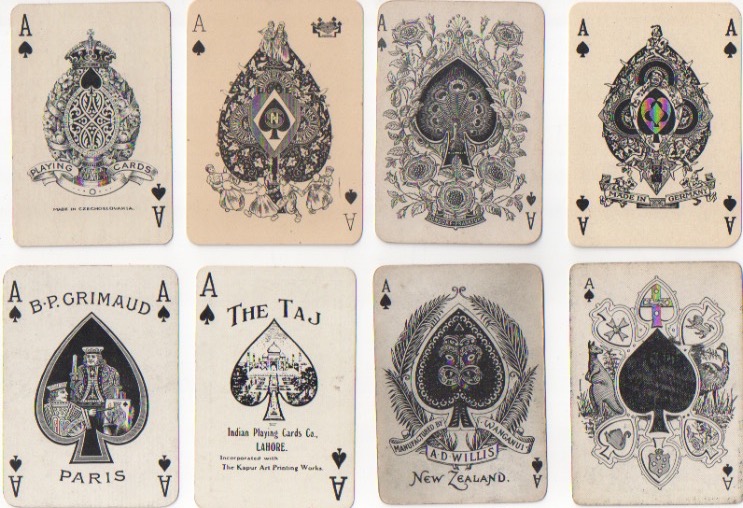
1: Piatnik, c.1946, later taken over by OTK, Prague; 2: Speelkaartenfabriek Nederland, c.1930; 3: Dondorf, c.1910; 4: F X Schmid, a copy of Goodall's AS, c.1925.
5: Grimaud, c.1900 onwards; 6: Indian PCCo., c.1940; 7: Willis, New Zealand, c.1900; 8: Sands & McDougall, c.1895.
By Ken Lodge
United Kingdom • Member since May 14, 2012 • Contact
I'm Ken Lodge and have been collecting playing cards since I was about eighteen months old (1945). I am also a trained academic, so I can observe and analyze reasonably well. I've applied these analytical techniques over a long period of time to the study of playing cards and have managed to assemble a large amount of information about them, especially those of the standard English pattern. About Ken Lodge →

Related Articles
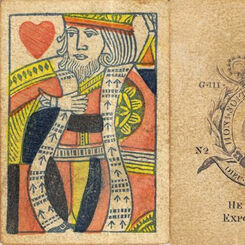
The Henry Hart Puzzle
Explore the intricate history and unique design variations of Henry Hart's playing cards, tracing th...
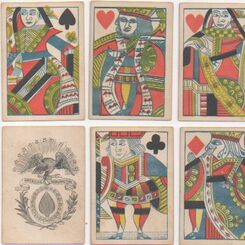
75: Early American cards
An overview of some of the early cards made in the United States.
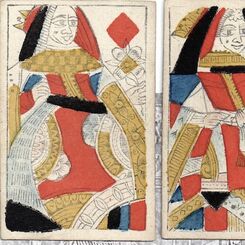
73: Fakes, forgeries and Tax Evasion
When there are oficial taxes to pay, people will find a way to avoid paying them - often illegally. ...
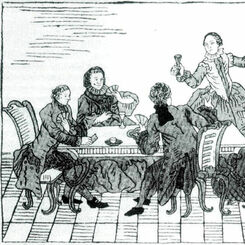
Russian Playing Card History - From the Beginnings to 1917
An in-depth review of the history of card-playing, gambling, legislation, manufacture and taxation o...
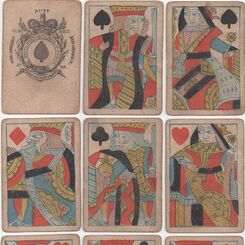
71: Woodblock and stencil: the hearts
A presentation of the main characteristics of the wood-block courts of the heart suit.
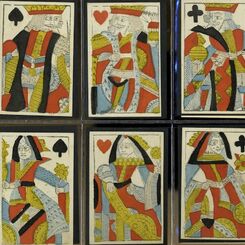
70: Woodblock and stencil : the spade courts
This is a presentation in a more straight forward fashion of the work done by Paul Bostock and me in...
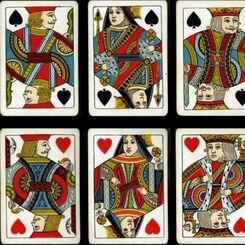
66: Adverts and related material 1862-1900
Some further material relating to cards from nineteenth and twentieth century periodicals.
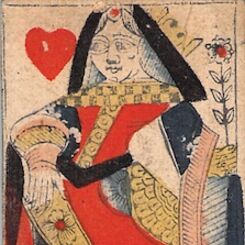
65: Adverts and related documents 1684-1877
Here are a few early advertisements relating to cards from newspapers 1684-1759 and a number of late...
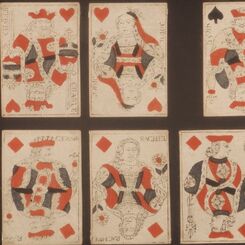
64: The descendants of the French regional patterns: 2
A continuation oF the development of the off-spring of the Paris patterns and a few examples of how ...
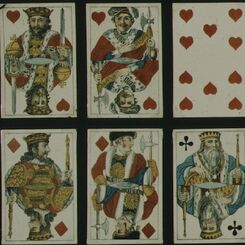
63: The descendants of the French regional patterns: 1
A great many regional patterns were exported from France and subsequently copied elsewhere. Some of ...
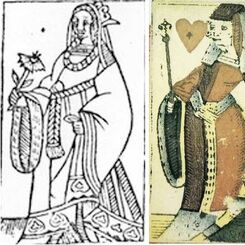
62: French regional patterns: the queens and jacks
Continuing our look at the figures from the regional patterns of France.
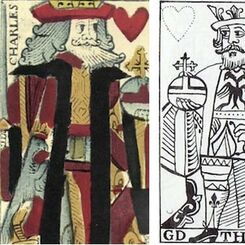
61: French regional patterns: the kings
On page 11 I illustrated several examples of the regional French patterns from Sylvia Mann's collect...
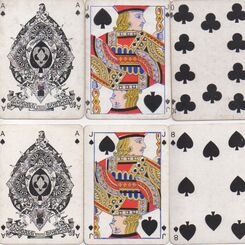
60: Some less common Goodall packs, 1875-95
There are some interesting packs from Goodall in the last quarter of the 19th century.
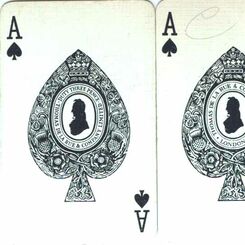
De la Rue’s 125th anniversary
In around 1955 De la Rue introduced a new coloured joker and a series of aces of spades with a silho...
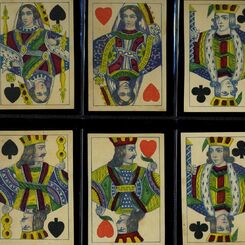
21: Belgian Makers: Brepols and Biermans
Brepols started making playing cards in 1826, although he had been in the printing trade since 1800....
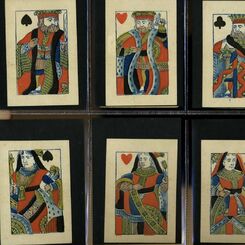
19: 19th Century Breaks with Tradition - Unusual versions of the Standard English Pattern
The centuries-long tradition of English court cards was subject to misinterpretation and in some cas...
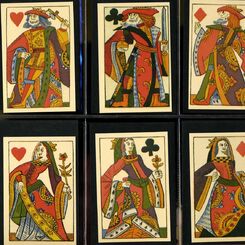
1: Playing Cards and their History: An Introduction and some links to other sites
What was considered the first mention of playing cards in England is in 1463 when Edward I banned th...
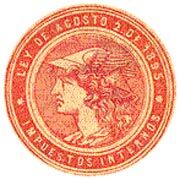
Argentina Tax Stamps on playing cards 1895-1968
Argentina Tax Stamps on playing cards 1895-1968
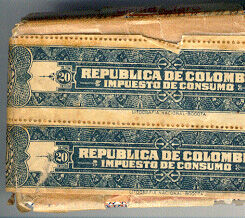
Impuesto de Timbre para Naipes
EL CONGRESO DE COLOMBIA. LEY 69 DE 1946, por la cual se elevan las tarifas de algunos impuestos indi...
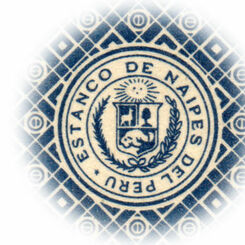
Estanco de Naipes del Perú
In October 1888 the Republic of Peru Congress passed Law no.26 establishing taxes on playing cards, ...
Most Popular
Our top articles from the past 60 days






















